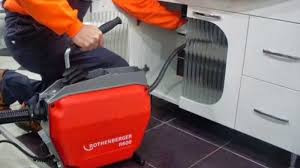Die casting is a widely used manufacturing process in modern industries, offering a range of advantages and limitations that are important to consider. In this article, we will delve into the various aspects of die casting, exploring its benefits and constraints, and gaining a comprehensive understanding of its role in today's industrial landscape.
Advantages of Die Casting
One of the primary advantages of die casting is its ability to produce complex shapes with high precision. The process allows for intricate designs and tight tolerances, making it ideal for manufacturing components with intricate details. Additionally, die casting offers excellent dimensional accuracy, ensuring that the final products meet the required specifications consistently.
Furthermore, die casting is known for its high production rates, making it a cost-effective solution for large-scale manufacturing. The rapid production cycle of die casting enables manufacturers to meet high demand without compromising on quality, providing a competitive edge in the market.
Limitations of Die Casting
Despite its numerous advantages, die casting also has limitations that need to be taken into account. One of the main constraints is the initial tooling cost associated with die casting. The creation of molds and dies for the process can be expensive, especially for small production runs. However, once the tooling is in place, the per-unit cost of die casting becomes more economical.
Another limitation of die casting is the material selection. While die casting is suitable for a wide range of materials, including aluminum, zinc, and magnesium, it may not be the best choice for materials with high melting points or those that are prone to porosity. Careful consideration of material properties is essential when opting for die casting as the manufacturing method.
Applications of Die Casting
Die casting finds extensive applications across various industries, including automotive, aerospace, and consumer electronics. In the automotive sector, die casting is used to produce engine components, transmission parts, and structural elements due to its ability to create lightweight yet durable components. Similarly, in the aerospace industry, die casting is employed to manufacture critical aircraft components that demand high strength and precision.
Moreover, die casting is widely utilized in the production of consumer electronics, such as smartphones, laptops, and household appliances. The process enables the efficient manufacturing of intricate and lightweight casings, ensuring both functionality and aesthetic appeal in the final products.
Future Trends in Die Casting
As technology continues to advance, die casting is also evolving to meet the changing demands of modern industries. The integration of automation and robotics in die casting processes is streamlining production and enhancing efficiency. Automation not only reduces the reliance on manual labor but also improves the consistency and quality of die-cast components.
Furthermore, the development of new alloys and materials suitable for die casting is expanding the application range of the process. Advanced alloys with enhanced mechanical properties and corrosion resistance are opening up opportunities for die casting in sectors that previously posed material limitations.
In conclusion, die casting remains a pivotal manufacturing process in modern industries, offering a unique combination of advantages and limitations. By understanding the intricacies of die casting and its applications, manufacturers can harness its potential to create high-quality components for diverse sectors, driving innovation and progress in the industrial landscape.








